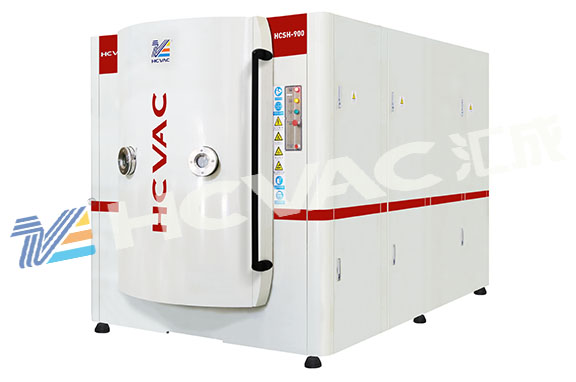In the electromechanical deposition of vacuum coating, it is always hoped that the coating thickness of the pvd coating machine is distributed more uniformly on the workpiece, the better. When the total amount of metal deposited on the workpiece is the same, if the thickness distribution is not uniform, it will bring many disadvantages:

(1) For the anodic coating, the thin part of the vacuum coating machine can not withstand sacrificial corrosion, which will cause the substrate to rust first. However, after a part of a part is corroded, it is no longer qualified, resulting in a waste of metal where the coating is too thick. To ensure that the thinnest part does not rust, the average thickness can only be increased, resulting in an increase in the cost of electroplating.
(2) For the cathodic coating, the porosity of the coating at the thin part of the vacuum coating machine is high (see Lecture 10), which is prone to point rust, and then the rust points increase, forming continuous rust. Compared with anodic coatings, cathodic coatings corrode faster in thin areas. For local anti-nitriding and carburizing coatings, holes are easily formed in thin parts, and the protective effect is lost. If the thickness is uniform, the porosity of each part has little difference, and the overall corrosion resistance is improved. For example, the steel shell of the battery is barrel-plated with bright nickel, and the coating in the shell (especially at the bottom) is very thin, and even small rust spots and yellowing have appeared during cleaning and drying. Quickly seal with a water-soluble sealant and dry.
(3) For bright electroplating, due to the low cathode current density in the thin layer of the vacuum coating machine, the bright leveling is poor, which affects the overall appearance.
(4) When the alloy is electrodeposited, the alloy composition at different thicknesses is different, or the appearance is uneven (such as imitation gold plating), or the corrosion resistance is inconsistent (such as zinc-nickel alloy).
(5) The physical and mechanical properties (such as brittleness, internal stress, etc.) of the coating at different thicknesses are different. If the machining process such as stamping and forming is required after plating, the machining performance is often poor (peeling, cracking, powder falling off, etc.) where the coating is too thick.
In terms of corrosion resistance, appearance, and machinability, it is desirable to improve the uniformity of the coating thickness of the
pvd coating machine. For dimensional hard chrome plating, if the user requires no grinding after plating, it is difficult to achieve; sometimes in order to ensure that the thinnest part meets the final size requirements, when the thickness uniformity is poor, the average thickness has to be greatly increased. Not uncommon. In order to make the thickness of each part of the coating on the part as close as possible, it is necessary to understand the factors that affect the uniformity of the thickness distribution.



